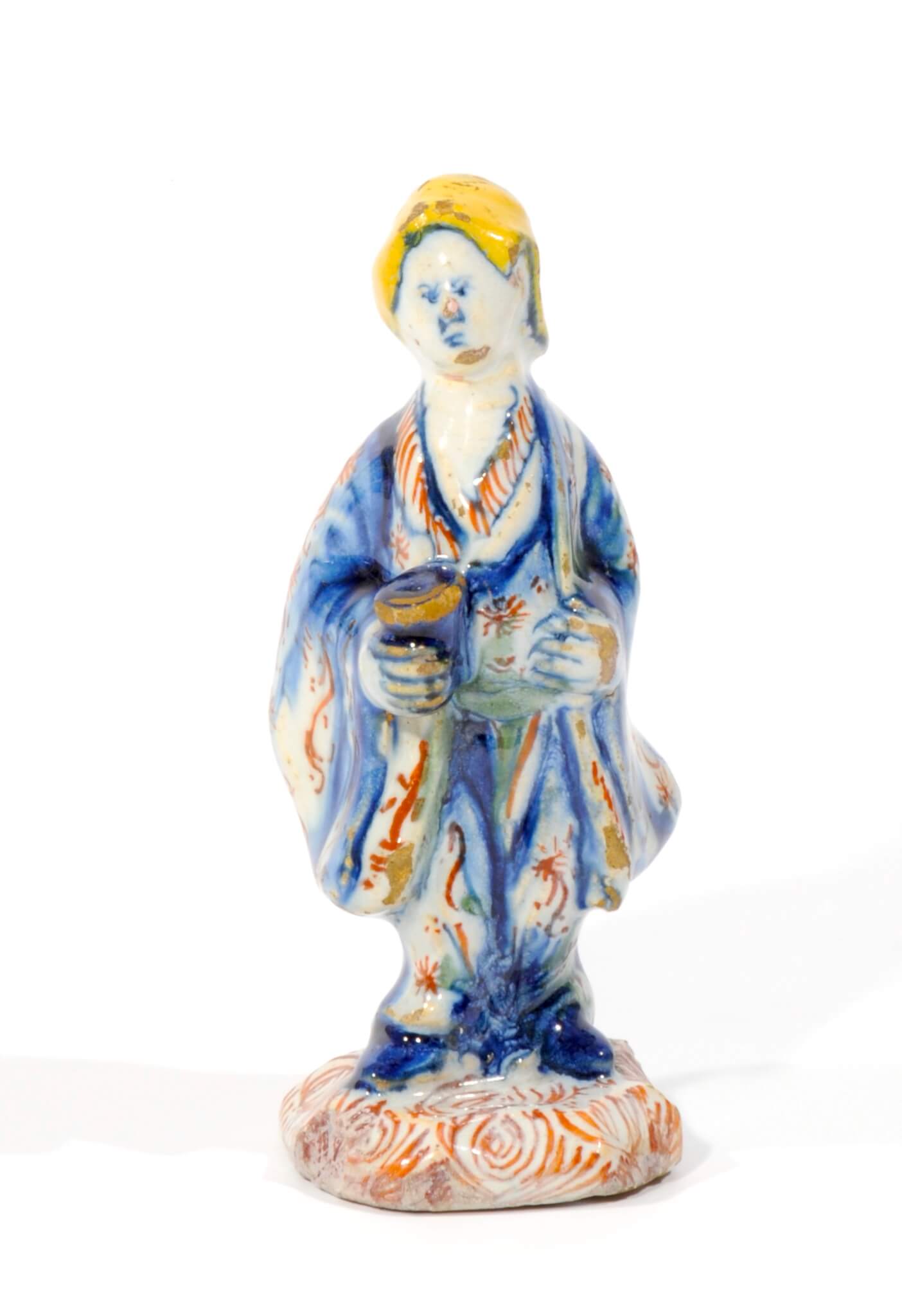D1010. Polychrome Small Figure of an Asian Man
€4.300,00
Delft, circa 1725
Wearing a yellow headdress, blue shoes and a coat with billowing sleeves over a green-sashed robe, all patterned with iron-red blossoms, scrolls and dots and shaded in blue, and modeled holding a blue beaker in his right hand, his left resting on his portly belly, and standing on a chamfered square base dashed in iron-red.
Dimensions
Height: 10.8 cm. (4 1/4 in.)
Out of stock
Description
Note
In the seventeenth century and the beginning of the eighteenth century, the fascination for the Far East was triggered nationwide by the many curiosities that were brought home. Artists and craftsmen created wonderful and intriguing pieces of art that imitated the Chinese, Japanese and Indian treasures, or that combined Eastern and Western shapes and patterns into so-called chinoiseries.
The Delft figure is clearly inspired by Chinese figures, and he is most likely made by the Delft potters after an example in enameled biscuit of the Kangxi period (1662-1722) or a similar figure in soapstone or wood.
Chinese small statues were already brought to the Netherlands in the seventeenth century. At first, they were transported only sporadically in the cargo of the VOC (Dutch East India Company) employees as souvenirs or on request of collectors of curiosities, meaning that they were not available for the common people. But in the second half of the same century the VOC, aware of the popularity of everything exotic, shipped large numbers of little Japanese and Chinese porcelain figures to the fatherland. In the eighteenth century, the previously exclusive figures became available to a wider audience which led to the fact that the figures were included in the domestic interior.




